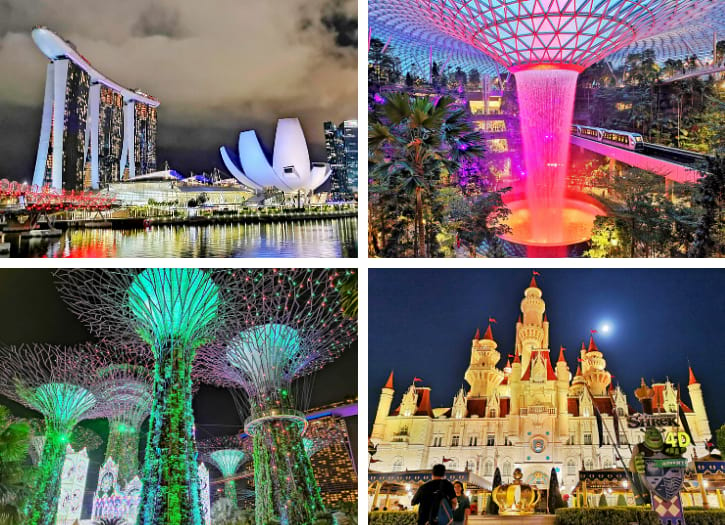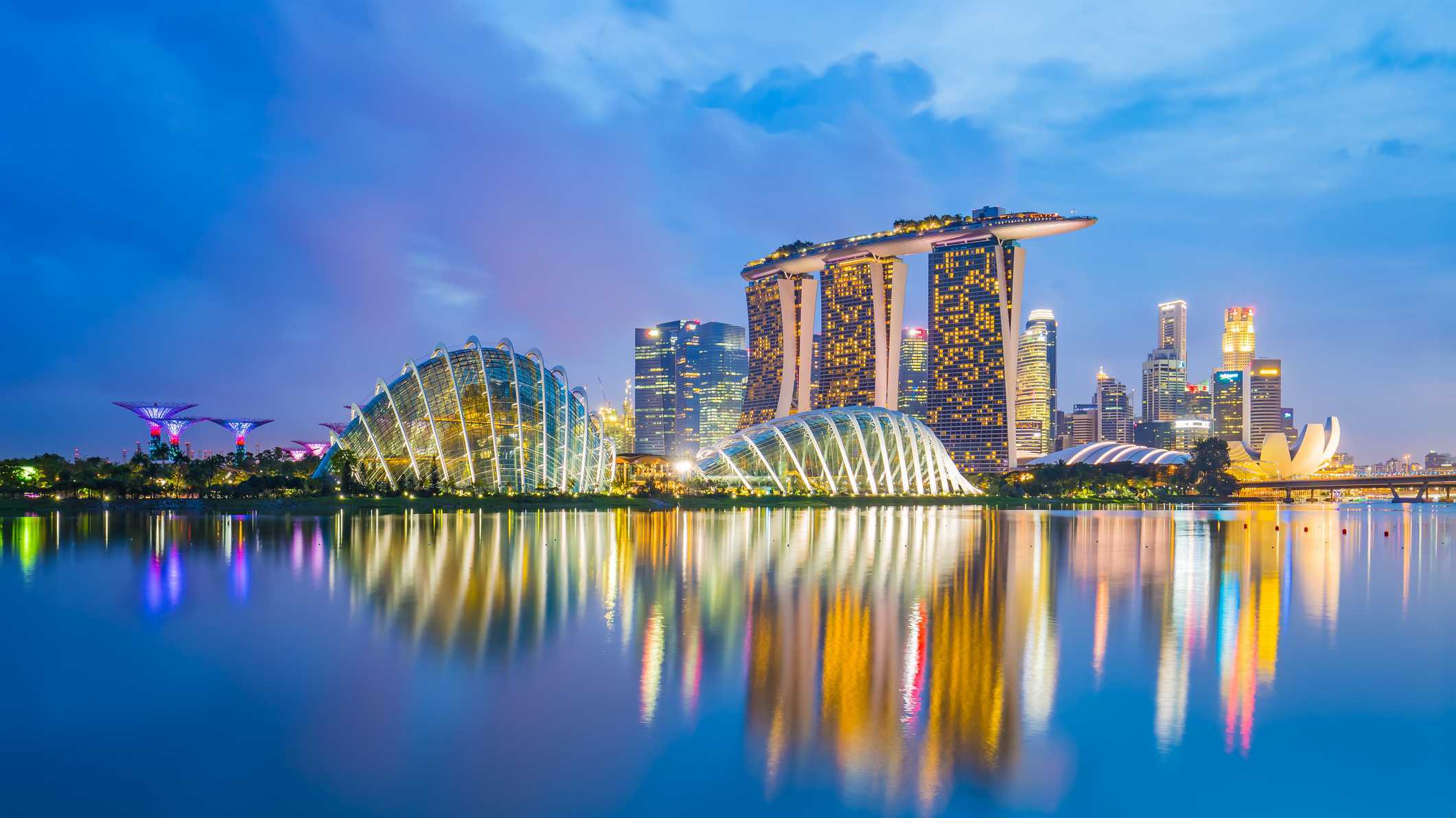
Singapore, the gleaming city-state often called the "Lion City," is a destination that defies expectations. In a space smaller than New York City, it packs in a world of experiences: futuristic supertrees and colonial-era shophouses, Michelin-starred street food and world-class fine dining, dense rainforests and meticulously planned urban gardens. It’s a place where efficiency and order live in harmony with a vibrant, multicultural soul. For the modern traveler, Singapore is not just a stopover; it’s a destination in itself, offering a rich, multi-layered journey through history, culture, and innovation.
This guide will take you through the very best of Singapore, from its iconic landmarks to its hidden culinary gems, ensuring you have all the information you need to explore this dynamic metropolis.
A Glimpse into Singapore’s Past: From Fishing Village to Global Hub
Related Articles about Singapore: A Tapestry of Modern Marvels and Timeless Traditions:
- Florence: A Renaissance Gem and Its Unforgettable Stays
- Venice: A City of Dreams and the Palaces that House Them – A Guide to its Top Hotels
- Unveiling the Charms of the Netherlands: A Traveler’s Guide to the Best Attractions
- Chile: A Symphony of Landscapes and Adventures – Unveiling its Best Tourist Attractions
- Nepal: A Journey to the Roof of the World and Beyond
To truly appreciate modern Singapore, one must understand its remarkable transformation. For centuries, it was a humble fishing village known as Temasek. Its strategic location on the Malacca Strait, however, was not lost on Sir Stamford Raffles of the British East India Company, who established a trading post here in 1819. This pivotal moment set Singapore on a path to becoming a bustling colonial port, attracting immigrants from China, India, and the Malay Archipelago.
Independence in 1965 marked the beginning of its most dramatic chapter. Under the visionary leadership of its first Prime Minister, Lee Kuan Yew, Singapore defied its lack of natural resources to morph from a developing nation into a first-world economic powerhouse within a single generation. This history is visible everywhere—in the stately colonial buildings of the Civic District, the preserved shophouses of its ethnic enclaves, and the audacious, forward-thinking architecture that defines its skyline today.
Main Attractions: The Heart of the Lion City
Singapore’s attractions are a perfect reflection of its character: a blend of the man-made magnificent, the culturally rich, and the naturally beautiful.
The Modern Icons: Engineering and Imagination
- Gardens by the Bay: This is Singapore’s horticultural wonderland and a testament to its "City in a Garden" vision. The main draw is the Supertree Grove, where colossal, tree-like vertical gardens soar up to 50 meters high. By day, they provide shade; by night, they come alive in a dazzling light and sound show called the Garden Rhapsody. Don’t miss the two cooled conservatories: the Cloud Forest, a misty biodome featuring a staggering indoor waterfall and lush mountain vegetation, and the Flower Dome, which replicates a cool-dry Mediterranean climate to showcase exotic plants from around the world.
- Marina Bay Sands: Dominating the skyline, this integrated resort is an architectural marvel. It consists of three cascading hotel towers connected by the magnificent Sands SkyPark, a boat-shaped platform perched 57 stories up. While the famous infinity pool is reserved for hotel guests, the public can buy tickets to the Observation Deck for what is arguably the best panoramic view of the city. The complex also houses a luxury shopping mall, a world-class casino, celebrity chef restaurants, and a theatre.
- The Merlion: No trip to Singapore is complete without a photo with its official mascot. Located at Merlion Park, this mythical creature with the head of a lion and the body of a fish spouts water into the picturesque Marina Bay. The lion head represents Singapore’s original name, Singapura (Lion City), while the fish body pays homage to its origins as a fishing village.
The Cultural Enclaves: A Mosaic of Heritage
- Chinatown: A vibrant maze of narrow streets, traditional shophouses, and bustling markets. Here, old and new coexist seamlessly. Visit the ornate Buddha Tooth Relic Temple and Museum and the historic Thian Hock Keng Temple, one of Singapore’s oldest Hokkien temples. For foodies, the Maxwell Food Centre and Chinatown Complex Food Centre are non-negotiable stops for authentic, affordable local dishes.
- Little India: A sensory explosion, Little India bursts with the scent of spices and jasmine, the sound of Bollywood music, and a riot of color. Walk down Serangoon Road, browse the 24-hour Mustafa Centre (a shopping institution that sells everything imaginable), and admire the intricate sculptures of deities at the Sri Veeramakaliamman Temple.
- Kampong Glam: The historic heart of Singapore’s Malay and Arab communities, this district is a trendy blend of tradition and cool. Its centerpiece is the majestic, golden-domed Sultan Mosque. Wander down Arab Street for its beautiful textiles and Persian rugs, then dive into Haji Lane, a narrow alleyway famous for its vibrant street art, independent fashion boutiques, and quirky cafes.
Nature and Wildlife: The Green Lungs of the City
- Singapore Botanic Gardens: A tranquil oasis in the heart of the city, this 160-year-old tropical garden is a UNESCO World Heritage Site. It’s a perfect place for a morning stroll or a picnic. Its crown jewel is the National Orchid Garden, which displays over 1,000 species and 2,000 hybrids of orchids in a stunning, colorful display.
- Singapore Zoo & Night Safari: Widely regarded as one of the best zoos in the world, the Singapore Zoo is renowned for its "open concept" enclosures, where animals roam in spacious, landscaped habitats separated from visitors by moats. Adjacent to it is the Night Safari, the world’s first nocturnal wildlife park. A guided tram ride or a walk along its trails offers a thrilling opportunity to see over 100 species of nocturnal animals in their naturalistic nighttime environments.
A Culinary Journey: Tasting Singapore
Singapore’s national identity is inextricably linked to its food. The city is a food lover’s paradise, with a culinary scene that ranges from humble hawker stalls to sophisticated Michelin-starred restaurants. The heart and soul of its food culture lie in its hawker centers—large, open-air food courts where vendors, often specializing in a single dish perfected over generations, serve up delicious and incredibly affordable meals. In 2020, Singapore’s hawker culture was officially added to the UNESCO list of Intangible Cultural Heritage of Humanity.
Must-Try Dishes:
- Hainanese Chicken Rice: Seemingly simple, this national dish is a marvel of flavor. Poached chicken is served with fragrant rice cooked in chicken stock, garlic, and ginger, accompanied by a spicy chili sauce.
- Chilli Crab: A true Singaporean invention, this dish features large mud crabs stir-fried in a sweet, savory, and slightly spicy tomato-based sauce. It’s messy to eat but utterly unforgettable.
- Laksa: A rich and spicy coconut milk-based noodle soup. The Singaporean version, Katong Laksa, has a spicier, seafood-based broth and is often eaten with just a spoon.
- Char Kway Teow: Flat rice noodles stir-fried over high heat with soy sauce, shrimp, cockles, Chinese sausage, and bean sprouts. A smoky, savory delight.
Planning Your Trip: Practical Advice
Best Time to Visit
Singapore’s climate is hot and humid year-round.
- February to April: Generally considered the driest period, with less rainfall and plenty of sunshine, making it ideal for outdoor activities.
- November to January: This is the monsoon season, characterized by more frequent and heavier rainfall. However, the rain often comes in short, intense bursts and shouldn’t disrupt your entire day.
- Festivals: Consider timing your visit with one of Singapore’s major cultural festivals, such as Chinese New Year (January/February), Deepavali (October/November), or Hari Raya Puasa (dates vary), to see the city at its most vibrant.
Transportation Options: Navigating the City
Getting around Singapore is a breeze thanks to its world-class public transport system.
- MRT (Mass Rapid Transit): The subway system is the most efficient way to travel. It’s clean, safe, air-conditioned, and connects to almost every major attraction.
- Buses: The public bus network is extensive and offers a more scenic way to see the city.
- Taxis and Ride-Hailing: Taxis are readily available, and ride-hailing apps like Grab are very popular and often cheaper.
- Walking: The central districts are very pedestrian-friendly, and walking is often the best way to explore areas like the Civic District, Chinatown, and Marina Bay.
For convenience, purchase an EZ-Link card or a Singapore Tourist Pass for unlimited travel on buses and the MRT for a set number of days.
Where to Stay: Accommodation for Every Budget
- Luxury: For an unforgettable experience, stay at Marina Bay Sands for its rooftop pool, The Fullerton Hotel Singapore for its colonial grandeur, or the legendary Raffles Hotel, birthplace of the Singapore Sling cocktail.
- Mid-Range: Areas like Clarke Quay, Bugis, and Orchard Road offer excellent mid-range hotels like Hotel G Singapore or YOTEL Singapore, providing comfort and convenience without the premium price tag.
- Budget: Travelers on a tighter budget can find stylish boutique hotels and clean, modern hostels in the cultural enclaves of Chinatown, Little India, and Kampong Glam.
Essential Travel Tips
- Stay Hydrated: The tropical heat can be intense. Carry a water bottle with you at all times.
- Follow the Rules: Singapore is famous for its cleanliness and strict laws. Do not litter, jaywalk, or smoke in prohibited areas. And famously, selling chewing gum is banned.
- English is Everywhere: English is one of the four official languages and is widely spoken, making communication easy.
- Tipping is Not Customary: Tipping is not expected, as a 10% service charge is typically added to bills at restaurants and hotels.
- Pack Light: Bring lightweight, breathable clothing. An umbrella and a light jacket for air-conditioned malls are also recommended.
Conclusion: A City of Infinite Possibilities
Singapore is a city that constantly reinvents itself while cherishing its past. It is a place where you can spend your morning exploring a lush, ancient rainforest and your afternoon marveling at feats of futuristic architecture. You can savor a $4 Michelin-starred meal at a hawker stall for lunch and dine at a celebrity chef’s restaurant for dinner. It’s a harmonious convergence of cultures, cuisines, and ideas. Clean, safe, and endlessly fascinating, the Lion City offers a seamless travel experience that caters to every interest, proving that great things truly do come in small packages.








